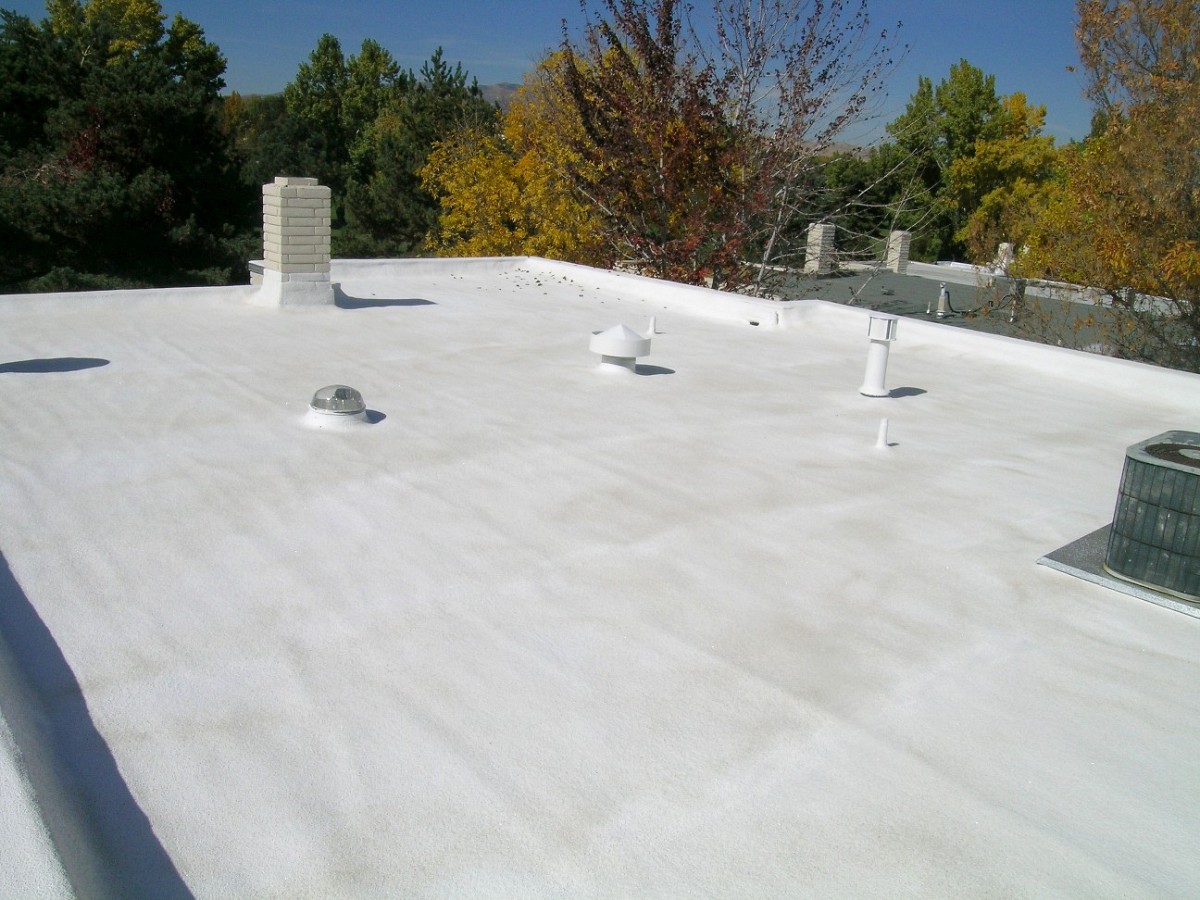Reflective Coatings for Asphalt Roofs

If you spend more money and energy on cooling than heating, you can cut this summer's air conditioning bills by investing in a reflective roof coating. The main options for coating an asphalt roof are white polymers and asphalt-like resins with reflective aluminum flakes. Both are reasonably priced, and offer short payback periods.
Why use a reflective roof coating?
On hot days, flat asphalt roofs reach up to 200 degrees Fahrenheit and absorb as much as 70 percent of the solar heat blasting onto the building. By contrast, the best reflective roof coatings reflect up to 80% of solar heat, and can reduce surface temperatures on a roof by 80 degrees.
In turn, this will cut temperatures in the building by up to 10 degrees, increase the effectiveness of the insulation, and cut cooling energy costs by 25% to 70%. It also makes the building more comfortable in hallways or other areas that may not be air conditioned.
The roof will also last longer without as much heat-related cracking and deterioration, saving money and materials in the long run.
White Reflective Roof Coatings
High-quality white polymeric coatings are widely available. They're made with acrylics or similar materials mixed with an opaque white reflective pigment. These are probably the most effective reflective coating for the majority of asphalt roofs. Some polymeric coatings are tinted for aesthetic reasons, but they are less reflective and therefore won't save as much energy.
Tests at Oak Ridge National Laboratory and Lawrence Berkeley National Laboratory showed white elastomeric coatings offer about 60% solar reflectance, leaving the roof temperature 36 degrees higher than the ambient air temperature - a much smaller difference than that generated by a black asphalt roof. All polymeric coatings must be chosen and applied carefully, particularly on rough asphalt roofs.
Aluminum Reflective Roof Coatings
Metallic reflective coatings may be better for some rough asphalt roofs. They use asphalt-like resins and other materials mixed with aluminum flakes. The aluminum rises to the surface of the coating as it sets, creating a solid, reflective surface. Metallic coatings are rated at 55% reflectance, which is similar to the elastomeric coatings. But aluminum typically has higher average temperatures than elastomeric-coated roofs. The aluminum retains heat more than elastomeric coatings.
Calculate Your Savings
Hire a roofer who is experienced with this type of coating.
Look for Energy Star-rated roof coatings, which guarantee a minimum level of reflectance.
Oak Ridge National Laboratory and Lawrence Berkeley National Laboratory also have a roof savings calculator. It uses weather data and your building information to estimate the cost of a new roofing system or coating, and the potential energy savings.
Photo credit: Akari Energy
Updated May 8, 2018.
Looking for a Pro? Call us (866) 441-6648

Roofing Average Costs
Roofers Experiences

Roof Repair Exactly As Dad Requested At Exactly The Right Price

New Roof Brings Out The Charm Of A 100-Year-Old House



